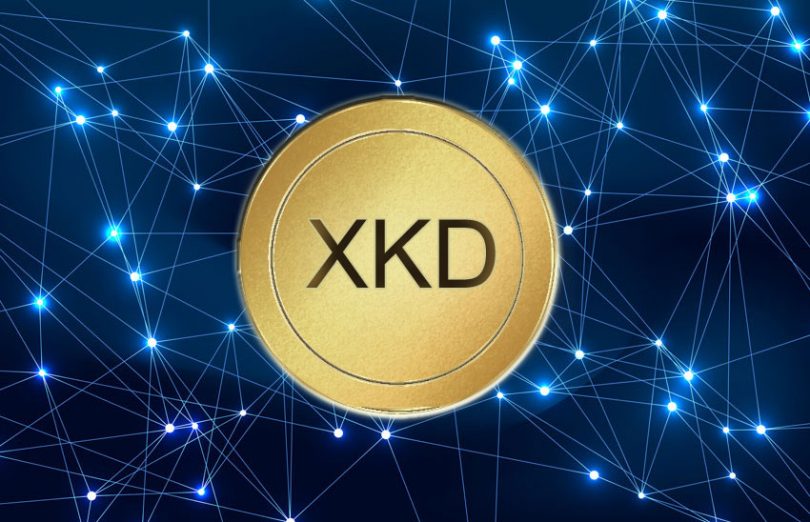In late October, the public Corda Network’s first digital currency XDC was unveiled by the Cordite Society and one of its founder Richard Crook. He’s a former head of emerging technology at RBS and a major player in the Corda development space with his LAB577 startup. A Twitter debate erupted from the XinFin community, which uses the same XDC ticker symbol for its Ethereum token. XinFin has a hybrid public/private blockchain, which also supports Corda.
While the ticker clash is a problem, the more interesting aspects of the story are the thinking behind the Cordite currency and the fact that currently, there isn’t a standard for cryptocurrency ticker symbols.
But let’s address the ticker symbol first. “We certainly didn’t court controversy,” said Crook. The Cordite Society agreed to alter its symbol to XKD, and XinFin is launching its XDC currency on the Corda Network using gateway technology provided by LAB577. XinFin targets global trade and finance and says it works with Air France KLM labs, the Government of Maharashtra and DCB Bank.
In terms of ticker symbols, ISO 4217 governs the naming of currencies, and those not associated with a nation start with an ‘X’. According to Crook, the cryptocurrency community’s attempts to register with the Swiss currency body (part of the SIX group) have failed. Hence it’s a bit of a free for all and there are numerous overlaps.
Corda has a public network?
For those unfamiliar with the Corda Network, Corda enterprise blockchains were designed to be interoperable with other Corda blockchains. And they do so by connecting via the Corda Network. Although invariably, the ability to access a consortia blockchain from the Corda Network is heavily restricted. The nodes that run XKD on the public Corda Network are on the same network but with fewer restrictions.
XKD is intended as a currency to buy and sell digital services on the Corda Network, and R3 was not involved in its initiation, although it’s aware of it. R3 co-founder Todd McDonald told Ledger Insights, “I think it’s super cool. I’m not sure how it’s going to evolve, but that’s the benefit of having this open ecosystem (and network).” He’s interested in its potential for DeFi. As an aside, R3 is not an investor in Crook’s business LAB577, although it is a client.
Chatting to Crook, it’s clear that significant thought was given to addressing the weaknesses of other cryptocurrencies and as a result, XKD has several novel features.
A cryptocurrency like no other
“It’s free and private to send XKD across the public Corda Network,” said Crook. “Those are fundamental differences between any cryptocurrency that’s come before us.” That’s all the more relevant as recent Ethereum gas prices have forced some participants off that network.
Cryptocurrencies are also notorious for enriching their founders and price volatility. The initial three founders are LAB577, DASL Co (also associated with Crook) and regulated digital assets payment firm BCB Group. However, all that’s needed to participate in governance is to stand up a Corda node on the public Corda Network.
Members can choose to increase the supply of XKD every 28 days by up to 14%. “The whole point in what we’ve created is hopefully something that will rapidly dilute us,” said Crook. The monthly percentage change can’t move by more than 100 basis points, which prevents the increase swinging from 14% one month to zero the following one. Crook hopes that the model will avoid extreme behavior such as creating hyperinflation or creating a store of value, like Bitcoin. But only time will tell.
Another feature is that all governance members are known. Crook contrasted that to automated crypto exchange Uniswap and many others where some of the token governance members are unknown. “That’s a problem. You can’t operate like that,” he said. To stand up a Corda Network node, you have to go through anti-money laundering procedures. The other cryptocurrency similar in that regard is Hedera Hashgraph‘s HBAR, but its governance structure is far less open.
Two years ago, when Decentralized Autonomous Organizations or DAOs were fashionable, Crook launched the Cordite Society to demonstrate how an old fashioned UK cooperative or mutual has a similar legal construct. And it’s this structure that’s used for the governance of the XKD token. There’s also the advantage of “an onshore and mature legal system,” noted Crook.
We wondered whether XDC might still be considered a security. Within the UK, Cordite consulted the FCA. While Crook was keen to emphasize he’s not a lawyer, he noted that there’s no consideration for the issuance of the XDC, there are no documents that constitute an offer, and they haven’t made any arrangement to swap the asset for another asset. Nonetheless, the XKD whitepaper includes a belt and braces legal disclaimer, particularly about other jurisdictions.
The first currency minting happened on 21 November, with the next on 19 December. There have been numerous expressions of interest, including from Trustology, the Ethereum digital wallet provider founded by ex-UBS executive Alex Batlin. Given the only hurdle is standing up a Corda Network node, it’s just a matter of time before others join.
As Crook noted, “it’s easy to create a currency. It’s difficult to get others to use it.” But this recipe seems to have a strong mix of ingredients.






